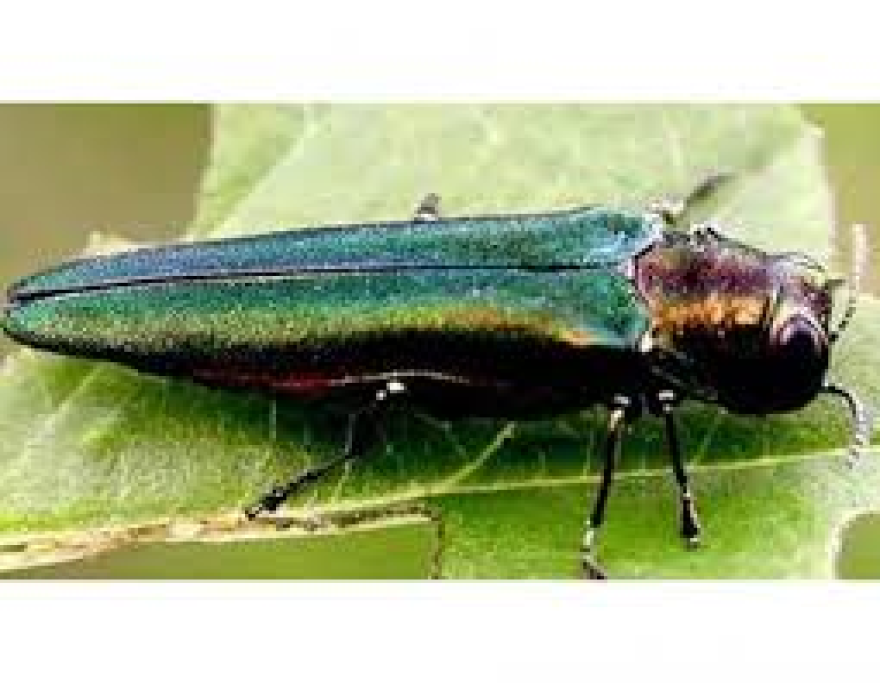The Emerald Ash Borer or EAB has been confirmed in six new Missouri counties. According to the Missouri Department of Conservation, the insect has been found in Caldwell, Gasconade, Harrison, Hickory, Webster and Wright Counties. That brings the number of counties where EAB has been detected to 59.
The small, metallic green beetle that is native to Asia attacks all species of ash trees. The adult beetle feeds on leaves and does little damage to trees. But, in its larval stage, the insect kills ash trees by feeding on the water and nutrient-conducting tissues just under the bark, according to MDC.
MDC forest entomologist Robbie Doerhoff suspects EAB is present in several other counties besides those where it’s been confirmed. That’s because after the insect arrives in a new location, it can take at least five years for the population to grow to the point where biologists can detect it using insect traps. He hopes the public will alert them if any insects are found.
“We really rely on public reports to help us find new EAB locations, particularly in the winter months,” he said.
You can help MDC track the spread of this invasive pest by keeping an eye out for bark blonding on ash trees, according to MDC. Bark blonding is caused by woodpeckers removing a tree’s outer bark while searching for insect larvae. On ash trees, this feeding activity reveals a white inner bark that is highly noticeable.
“Ash trees with bark blonding may not have EAB, but it is certainly worth reporting these trees for a closer look by MDC foresters,” said Doerhoff.
MDC encourages Missourians to report possible EAB infestations in counties where the pest has not yet been confirmed. Reports can be made by using the online form at eab.missouri.edu or by calling MDC’s Forest Pest Hotline at 866-716-9974. You can help slow the spread of EAB and other invasive forest pests by using locally harvested firewood. Buy firewood near where you plan to burn it, MDC biologists advise.



